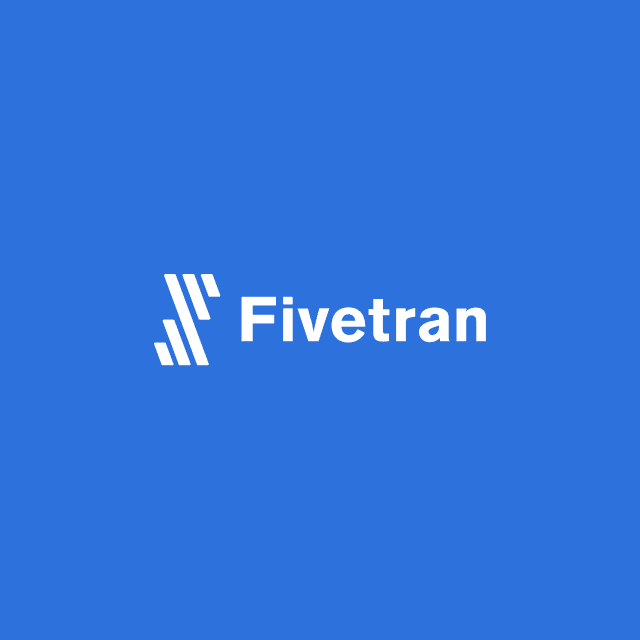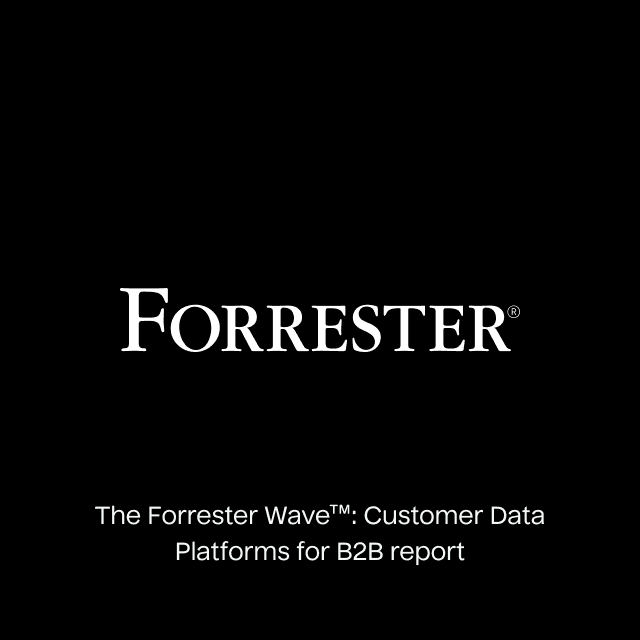Your customers expect every interaction to feel as personalized as their Netflix queue. But personalization isn’t just about knowing who they were last week; it’s about understanding what they need right now. They browse, buy, and bounce in real time, and they expect experiences that respond just as quickly. If your campaigns can’t adapt to their current behavior, you miss the moment that matters most. Without real-time personalization, it’s easy to miss those moments, sending the wrong message, making the wrong offer, or failing to show up at all when it matters most.
What is real-time personalization?
Real-time personalization is the process of instantly adapting a customer’s digital experience based on their current behavior, preferences, and context. Unlike traditional personalization, which relies on what a customer did at a single point in time, real-time personalization combines historical data with live signals like clicks, page views, location, and device type. This enables you to deliver dynamic content, offers, or messaging while the customer is still engaged, not after they’ve moved on.
For example, when a shopper browses winter jackets, a website might immediately update to showcase cold-weather gear, offer a time-sensitive discount, or highlight nearby store availability. On mobile, the app might surface a loyalty-based promotion, while a follow-up email recommends complementary items, all triggered by the shopper’s current activity.
Why real-time personalization matters
Modern customers don’t follow clean, linear paths. They bounce between tabs, devices, and channels, expecting brands to keep up without missing a beat. However, most marketing strategies rely on rigid journeys, predefined triggers, and static flows that assume customers behave predictably.
That’s the problem real-time personalization solves. It doesn’t wait for a scheduled email or a stale automation. It responds in the moment, adapting to what the customer is doing right now, whether that means updating a recommendation mid-session, surfacing the right upsell, or intercepting churn before it happens.
In a world where attention is short and options are endless, reacting instantly isn’t a nice-to-have; it keeps customers from slipping away. Real-time personalization replaces reactive marketing with responsive experience design, helping brands meet customers where they are, not where a flow says they’d be.
How real-time personalization works?
Real-time personalization begins with signals streaming in from web and mobile (clicks, scrolls, purchases, and more), all captured as they happen. These live signals instantly merge with deeper context from your data warehouse, such as past purchases, support tickets, or loyalty status. The result is a full-picture view of each customer, not just based on who they are, but on what they’re doing right now.
However, recognizing a customer immediately requires more than just behavioral data. A flexible identity graph stitches activity across devices, sessions, and anonymous visits. You can still personalize with confidence whether someone is logged in or browsing on a new device.
Once signals are unified and identity is resolved, decisioning takes over. Business rules or machine learning models evaluate what’s happening in real time and determine the right next move, if any. That could mean showing a relevant offer, highlighting a product that matches their intent, or simply holding back. Real-time personalization is as much about timing and restraint as it is about relevance.
All of this happens in milliseconds. Decisions are passed via API to your CMS, ESP, mobile app, or on-site components, shaping the customer experience while they’re still engaged. They keep browsing, unaware that a decision loop just fired beneath the surface to make their journey natural, intuitive, and personal.
To support that level of responsiveness, you need infrastructure designed for speed and depth. That’s where a composable approach excels. Instead of relying on a traditional CDP that requires duplicating your data and conforming to rigid workflows, a composable system works directly on your real-time event stream and warehouse data. You avoid data replication, reduce latency, and fully control governance and architecture.
This flexibility lets you plug in best-in-class tools for identity resolution, enrichment, and decisioning, tailoring your system to your needs, not your vendor’s roadmap. It's how modern teams unlock the full power of real-time personalization: combining the immediacy of live data with the richness of historical context, delivered seamlessly at every touchpoint.
Real-time personalization use cases
Once your customer data is unified and accessible, real-time personalization becomes more than a technical capability; it becomes a strategic lever to drive revenue, customer satisfaction, and retention. In every channel, speed is often the difference between a missed opportunity and a meaningful conversion. Below are key use cases that illustrate how real-time can materially improve outcomes.
Email personalization
Email is only effective when it lands at the right time with the right message, and real-time personalization ensures both, keeping your brand relevant in the moments that drive action. Triggering a message seconds after an action (rather than minutes later) preserves momentum and intent. Similarly, dynamically updating email content at open time ensures it reflects the user’s current context.
Example: A shopper abandons their cart after adding a winter coat. Within seconds, they receive an email with a personalized message: “Still thinking it over? Grab it before your size sells out.” When the email is opened on mobile, it automatically shows in-stock sizes and a location-based delivery estimate.
App personalization
Mobile users expect every tap to lead somewhere personal. Real-time personalization delivers on that expectation by adapting instantly to in-session behavior, turning casual browsing into meaningful engagement through timely, relevant next steps.
Example: A user browses running shoes in a fitness app. As they leave the product page, the app suggests adding a pair of athletic socks and a water bottle to their cart, items commonly bought together. The suggestions feel helpful, not pushy, and show up at the right moment to complete the purchase.
Location-based personalization
Geo-personalization is only effective if it's immediate. Real-time responsiveness to physical location changes helps brands deliver value in the exact place and moment that matters.
Example: A user walks within a block of a coffee shop. They instantly receive a push notification offering a buy-one-get-one drink valid for the next 15 minutes. Because the message arrives in real time, the customer alters their route and stops in. A delay of even 10 minutes would have rendered the notification irrelevant.
Product recommendations
The best product recommendations feel intuitive, not intrusive, and real-time relevance is what makes them land before interest fades or context shifts. Real-time engines continuously adjust suggestions based on what users are actively doing, not just historical data, making every interaction more precise and useful.
Example: A customer browses cameras. As they view a product page, the site dynamically updates to recommend compatible lenses and camera bags. Later in the session, after searching for memory cards, those suggestions replace the original ones. Recommendations track intent moment by moment to remain relevant.
On-site personalization
Web experiences shouldn’t be static. Real-time personalization lets you adapt content, layout, and offers based on in-session behavior and known user data without waiting for a refresh or new session.
Example: A returning visitor lands on your homepage. Instead of seeing a generic banner, they’re shown a personalized welcome message and product categories based on their last session. When they click into a category, the layout instantly prioritizes top-rated items in their price range. The experience updates continuously without requiring a login or page reloads.
Triggered messages
Real-time triggers make automated messages feel human. They respond to behavior within seconds to guide customers while their interest is still fresh. Real-time personalization ensures behavioral triggers are processed instantly and messages reflect the customer’s complete context.
Example: A customer places an order and immediately receives a confirmation SMS with estimated delivery timing and a link to track their shipment. One hour later, they view a pair of jeans without purchasing. A personalized follow-up email is triggered in real time: “Pair your new sneakers with our most-loved denim.” It’s fast, relevant, and responsive to past and present signals.
How to get started with real-time personalization
Before you build real-time personalization, you need to be clear on why you're doing it. Real-time isn’t always the answer, so start with the problem you’re solving. If you’re a retailer, that might be high cart abandonment, low first-time conversion, or reactivation for churned customers. Every problem creates a personalization opportunity: show product recommendations pre-checkout to increase basket size, surface live inventory or local store pickup options, or personalize offers and reminders on return visits. Start with the outcome you care about, then validate whether real-time personalization is the right solution to solve the problem.
You can't personalize anything if you can’t access the right customer data. You’ll need event collection to capture real-time user actions like browsing, clicks, and cart activity. Most companies have fragmented data across SaaS tools and CRMs, so you’ll likely need to centralize this into a data warehouse. You’ll also need identity resolution to stitch customer touchpoints into unified profiles. You usually need a Customer Data Platform (CDP) or a Composable CDP stack.
Start every personalization use case with a clear, measurable goal. What are you trying to drive? Revenue lift, conversion rate increase, reactivation rates, or higher average order value. Your target metric guides both your implementation and your evaluation of success.
After you build your data foundation, you must validate that you can both decide and deliver personalization in real time. For decisioning, you’ll need ML models, rules engines, or AI systems to generate the right personalized outputs. For delivery, you must ensure your email platform, website, mobile app, or ads can instantly surface those outputs. You won't see full value without both sides of the stack operating in real time.
Once your stack is ready, launch a pilot focused on the highest-impact use case. Set up control groups to isolate lift from personalization, and continuously monitor decision logic to optimize performance. Expand personalization across additional channels, customer segments, and use cases if you see meaningful results. Real-time personalization scales only if your foundation is solid.
Real-time personalization stack
Real-time personalization isn’t just about moving faster; it’s about creating a system that senses, decides, and acts in the moment. To do that well, you need infrastructure built to support intelligent, agentic experiences. Each layer of the real-time stack plays a distinct role in this feedback loop, and together, they turn raw data into responsive, revenue-driving action.
Data warehouse
It all starts with the data warehouse. This is where every system in your business converges, product events, transaction logs, support tickets, email engagement, loyalty data, and more. It's not just storage, it's your unified source of truth.
Marketing teams can model this data to define what matters: high-intent behaviors, lifecycle stages, churn risk, or custom audience segments. The warehouse makes personalization possible by giving everyone access to a complete, reliable foundation.
Composable CDP
The composable CDP layer sits on your data warehouse. Unlike legacy CDPs, which require data duplication and predefined workflows, a composable CDP is modular and real-time.
This layer ingests live events from web and mobile, stitches them to historical profiles using flexible identity resolution, and syncs them back to your warehouse for enrichment. The result: always-up-to-date, unified customer profiles that are ready for action.
Crucially, this is where real-time becomes real. The cCDP listens to live signals, what someone is doing right now, and translates them into context-rich profiles that downstream systems can act on instantly.
Activation channels
Once customer data is unified and live, the next step is activation. This is where messages get sent, product experiences adapt, and campaigns respond in real time to customer behavior.
The main marketing activation channels include:
- Marketing engagement platforms (e.g., Braze, Iterable): Send dynamic, behavior-driven messages via email, SMS, or push within seconds of a key action.
- On-site & in-app personalization: Adapt layout, recommendations, or offers in real time as customers scroll, tap, or navigate.
- Paid media platforms: Refresh custom audiences, suppress converted users, or trigger retargeting ads in response to live behavior.
When powered by unified, real-time profiles, these tools deliver precise, relevant, and immediately responsive experiences.
AI Decisioning
AI Decisioning is the layer that informs what to do for each customer, in each moment. It uses AI agents to analyze live context, paired with historical knowledge of the customer, to determine the next best action: show a promotion, suggest a product, send a message, or hold back.
This replaces rigid journey logic with adaptive decision-making. Instead of pushing a message just because it's “Day 3” in a flow, you respond based on what the customer is doing right now.
AI Decisioning enables true one-to-one personalization at scale. It continuously learns from new signals, adapts its decisions, and fine-tunes each interaction to maximize relevance while minimizing friction.
Closing thoughts
It’s not just about speed; it’s about delivering the right message with full customer context when it matters. In a world where attention is fleeting and expectations are high, brands that can act in real time will win lasting loyalty.
Customers don’t just want personalized experiences; they expect them to be seamless, intuitive, and immediate. Real-time personalization makes that possible. It removes friction, solves problems faster, and shows customers you understand them without asking.
Most solutions force you to choose between reacting quickly and using complete data. Hightouch does both. By combining real-time behaviors with your whole customer history directly from your data warehouse, you can deliver the experiences that set your brand apart now and keep customers coming back in the future.
Want to see what this looks like in action? Book a demo with our solutions engineers.















